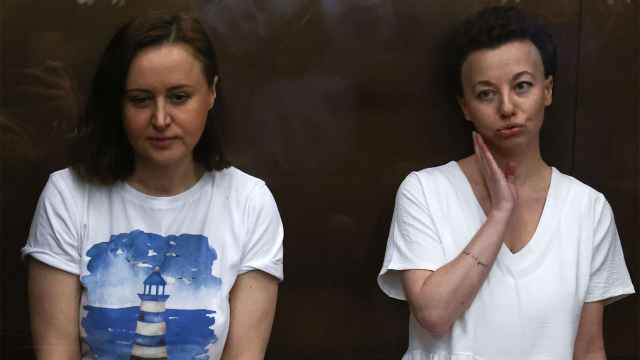As I climbed to the fifth floor in an old Moscow building, I wondered if my colleague, Larisa, would be able to navigate these stairs in the next 10 years or so. She was already in her late 60s and not in good health. It was 2002, my first year in Moscow, and I did not know what to expect when I finally reached her apartment door.
I knew Larisa was a university professor and that her husband, Ivan was a municipal engineer. I was aware they had lived in this building for more than 35 years, so I assumed they would have a comfortable home befitting professionals of their stature.
This was the second time I had been invited to dinner by one of my Russian colleagues. Two months prior, I had visited a friend named Svetlana whose father had been a KGB officer. Sveta, her husband and two small daughters lived in an ordinary two-bedroom apartment that she had inherited when her parents died. I presumed Larisa and Ivan would have something similar or possibly better.
Larisa greeted me with a hug and quickly introduced me to Ivan, who acted as though he already knew me. Our dinner was awaiting us on a small coffee table in the room. Larisa and I shared the couch while Ivan used the only chair. Later when Larisa went into the kitchen to prepare our tea, I came along to help.
The kitchen was minimal with no table, but it had a single day-bed in the corner. As I returned to the living room with our cups, I took a moment to glance about the room. The opposite wall was filled by a narrow wardrobe cupboard and a cabinet with a few pieces of china and numerous books. A small desk with a computer was squeezed into the space at the end of the room. My eyes searched for the entrance to their bedroom, but I found only the two doors I knew opened to the tiny bathroom and the toilet.
As the evening progressed, Larisa and Ivan shared many details of their lives during Soviet times. They felt they were fortunate to have this apartment where she slept on the couch and he slept on the small bed in the kitchen. They ate all their meals standing up or from the coffee table, and all the clothes they both owned were in the narrow wardrobe. I was stunned. It was hard to imagine that this wonderful, highly educated couple would live in one room in a five-story walk-up for their entire lives and be grateful to have it.
They also told of their dacha. It was their pride and joy. They had carried by hand every building item from the city to the country via metro, bus and by foot for several years. Larisa told how wonderful it was in the 1990s to at last be able to buy flower seeds and bulbs for her garden. They were finally able to purchase a car, which made the trip to the dacha more enjoyable and had installed a refrigerator, a stove and even a television. But their happiness was transitory. Thieves stripped the place — not once, but three times. Now they only take what they can bring back to Moscow in their car. But at least at the dacha, they both can sleep in the same bed.
As I went home that night, I began to understand that some of my Russian friends probably felt I was extravagant, living in a 50-square-meter apartment by myself. I had one bedroom, a living room that served as an office with a couch, three chairs and a small computer desk, and a kitchen that had a table with four chairs. This would be considered modest for a grandmother in an average U.S. town or city. But if Russians were living in my apartment, it probably would accommodate at least three generations of two to six adults and several children, all who would feel fortunate to share the two rooms. I also realized my friend Sveta's apartment actually was quite extraordinary in size and furnishings, a testament to the influence and stature of the old KGB.
My expectations and assumptions changed numerous times that first year. During my first Russian trip in 2002, I was told I would be staying in a hotel. I had slept in my share of economy hotels and motels in the U.S. and was not expecting anything upscale in Moscow. I tried to imagine it, but my mental images fell far short of reality.
Fortunately, a Russian colleague accompanied me or I would never have found the place. We took the metro to the very last stop, then a bus. I was told we would have to walk the remaining distance carrying our luggage, but it was not too far.
It was dark and the road was unpaved and unlit. It had been raining and as we started down the long, muddy lane I almost laughed, thinking of the old cliche, "It was a dark and stormy night … ." A huge iron double gate filled the end of the lane, but a heavy chain and padlock decorated the latch.
My friend said this was no problem since there was not a fence attached to the gate. But this meant stepping off the road into the mud and weeds to navigate around the useless gate. As we did so, an enormous old building right out of a Frankenstein monster movie emerged in the darkness. At that point, I did not know whether to chuckle or be afraid. I found out later it had been a tuberculosis sanatorium in Soviet times.
We climbed the stone stairway and entered a large waiting room where one small light struggled to make the room not so scary. A cantankerous babushka occupied the reception desk and gave me the key to my room and one little towel. I had brought my own soap but did not know this thin towel was to be my washcloth and towel for the entire week. I also had to fight for a roll of toilet paper.
The room was clean and the bed acceptable so I actually slept fairly well. The next morning at breakfast, something occurred that had a profound impact on me. It involved one piece of paper.
A single-ply cocktail napkin had been cut it into eighths, and each tiny fraction became a napkin carefully placed on the table for each guest. I was so taken aback by this sliver of paper that for me it became a symbol of the deprivation experienced by citizens of the Soviet Union for 70 years. My students tell me that in many villages in Russia today, small napkins still are cut into eighths.
Millions of rubles are spent creating an image of abundance for projects like Sochi but not for napkins.
Marilyn Murray is an educator specializing in the treatment of trauma, abuse and deprivation, with more than 2,000 people attending her classes in Russia over the past 11 years. Her latest book, "The Murray Method," is available in English and Russian.






